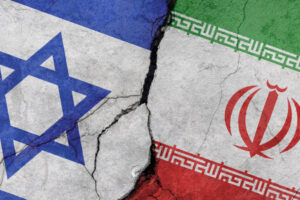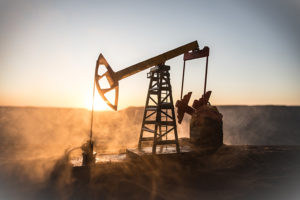The Russian crisis of 1998 - the sad end of Yeltsin and the beginning of the Putin era (Part II)
The Russian crisis of 1998 is a painful lesson in economics in practice. IN The first part In the article you could read about Russia's economic transformation, which, generally speaking, was not very spectacular. A selected group of people became rich and, often by bending the law, acquired huge fortunes. The development of the mafia made people feel unsafe. More and more often, Russians were not satisfied with the transformation. Ordinary people were particularly averse to oligarchs who flaunted their wealth and influence with those in power. However, from the outside it seemed that the macroeconomic situation was stabilizing. Inflation fell, and Russia regained trust in foreign institutions. Russia passed the first part quite dry the Asian crisis. As it soon turned out, stability and resilience were very fragile.
Read: The Russian crisis of 1998 - Prelude to the failure of the Russian economy (Part I)
1997 – 1998: fight for stability
Although the Russian crisis is inextricably linked to 1998, it began a little earlier in "asymptomatic form". In November 1997, the ruble became the target of speculative attacks. Investors believed that the ruble was overvalued and would repeat the fate of Asian tiger currencies. The Central Bank of Russia saved the RUB by selling foreign currency reserves. As a result of the intervention, foreign exchange reserves were reduced by USD 6 billion. At the same time, foreign investors began to enter into short positions on the ruble using derivatives. The reason was their belief that the ruble is currently too strong relative to its fundamentals. Commercial banks also had high exposure to exchange rate risk. If the ruble weakened, both the central bank and large commercial banks experienced losses. It was a ticking time bomb as the macroeconomic situation began to change to Russia's detriment.
At the end of 1997, the Russian budget began to have problems. The reason was the drop in prices oil and non-ferrous metals. This was a big problem because the revenues from the sale of these raw materials accounted for up to ⅔ of Russia's revenues. This increased pressure on the ruble as investors began to fear budget problems and higher inflation. Despite the difficult situation, Russian politicians tried to improve finances. In early 1998, the Duma presented proposals to change the tax system. It was supposed to be simpler and provide greater budget revenues. Ultimately, the act was introduced with amendments that "diluted" the reforms. Even if the reform was successful, the budget situation was so bad that help was necessary International Monetary Fund (IMF). After long negotiations, no agreement was finally reached.
Political instability creates additional problems
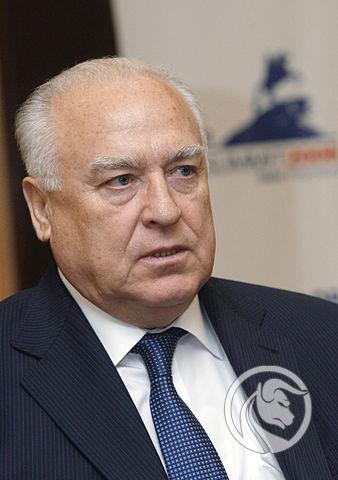
Wiktor Chernomyrdin. Source: wikipedia.org
The country was also politically unstable. President Yeltsin, who struggled with his alcoholism, often changed his mind under the influence "advisors - oligarchs". In March 1998, the "unsinkable" Prime Minister Chernomyrdin was dismissed. He was replaced by Sergei Kiriyenko, who was 35 years old when he became prime minister. Before becoming prime minister, Kiriyenko was energy minister.
Russia also applied for financial resources from the International Monetary Fund (IMF), but no agreement could be reached. At the end of March, the political and economic situation in the country was already tragic. On March 23, President Boris Yeltsin unexpectedly fired the entire government cabinet, including Prime Minister Viktor Chernomyrdin. He then appointed 35-year-old Sergei Kiriyenko, the former chief executive of a banking and oil company, as prime minister. Before taking office, Kiriyenko served in the government for less than a year, which put investors' trust in the government even further to the test.

Sergei Kiriyenko. Source: wikipedia.org
The new government tried to stabilize Russia's financial situation. As a result, on July 13, 1998, IMF assistance i World Bank amounted to $22,6 billion. As part of the support, short-term debt (GKO) was converted into long-term Eurobonds. The Russian government, contrary to some economists (including Andrei Illarionov), decided to do so maintain a fixed ruble-dollar exchange rate. In theory, this was to ensure that foreign investors would be more willing to invest in Russia because there would be no exchange rate risk. On the other hand, this situation increased the risk of a currency crisis if the Central Bank of Russia runs out of foreign exchange to defend the exchange rate.
The new government is trying to put out the fire
The budget situation was terrible. The government obtained liquidity by postponing the payment of employees working in state-owned companies. Desperate coal mine workers went on strike, blocking the Trans-Siberian Railway. This once again showed that the budget is in a moribund state. According to estimates by independent analysts On August 1, 1998, unpaid employee wages totaled $12,5 billion. It was a huge amount, which, combined with the servicing of other liabilities, increased the risk of insolvency. It would help devaluation, but no politician was brave enough to take this step. The increase in interest costs resulted in... in June, monthly interest alone was 40% higher than monthly tax revenues. It was a recipe for disaster.
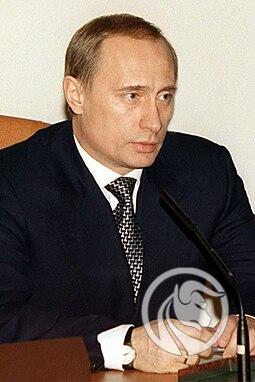
V. Putin in 1999. Source: wikipedia.org
Already in mid-July 1998, the Duma rejected the government's plan to combat the crisis. As a result, the government could only act thanks to presidential decrees. On July 29, 1998, the new prime minister's office was hanging in the balance. The situation was saved for a moment by Yeltsin, who interrupted his vacation to prevent a political crisis. I ended up making minor corrections in the office. Vladimir Putin, an unknown person, became the head of the FSB and was replaced by Nikolai Kovalyov.
The Central Bank of Russia tried to ensure that the ruble-dollar exchange rate remained at the so-called "floating peg" between levels 5,3 and 7,1. As a result, the central bank had to sell dollars if the exchange rate rose to 7,1. At the same time, he had to buy rubles if the exchange rate dropped to 5,3. However, as the confidence of foreign investors decreased, currency interventions had to become more and more frequent. Between October 1, 1997 and August 17, 1998, the Central Bank of Russia spent $27 billion to save the mentioned corridor.
So Russia before August 17, 1998 had the following problems:
- a strong oligarchy that hindered reforms;
- dire budget situation;
- depleted foreign exchange reserves to keep the ruble too strong;
- large corporate dollar debt;
- decrease in state budget revenues as a result of falling raw material prices;
- unstable political environment;
- society disappointed with socio-economic changes.
Russian Crisis: The Great Ruble Crash
The situation in mid-August seemed hopeless. Since the fiction could no longer be maintained, the Russian government decided to act. On August 17, 1998, the government and the central bank took a number of actions. Among them were:
- Devaluation of the ruble – from now on, USD/RUB was to fluctuate in the range of 6,0 – 9,5 instead of 5,3 – 7,1. This meant that Russian companies with debt in dollars had to pay larger principal and interest installments (converted into rubles). This action supported exporters, but hurt importers.
- Debt restructuring – the government announced that government debt denominated in rubles will be restructured. It was supposed to be a complicated operation that, on the one hand, was supposed to reduce the burden on Russia's finances and, on the other hand, was to prevent the bank's liquidity situation from deteriorating.
- Moratorium on dollar debt – in the case of debt denominated in dollars or other currencies, there was to be a 90-day moratorium. This was to give time to obtain temporary liquidity, which would be used to better satisfy creditors.
Some investors were shocked, which resulted in the weakening of the ruble MICEX exchange. At that time, MICEX was one of the most important elements of the financial market in Russia. It was there that the ruble to dollar exchange rate was determined. There was a frantic attempt to withdraw capital from Russia. Russian stocks and bonds denominated in rubles were sold off. The acquired rubles were immediately converted into dollars. Between August 17 and 25, the USD/RUB rate increased from 6,43 to 7,86. The Russian central bank was no longer able to save the situation. For this reason, trading in the ruble on the MICEX exchange was suspended on August 26.
After several days of deliberations, it was decided to abandon the currency corridor in favor of a floating exchange rate. Due to the lack of foreign exchange reserves, the ruble exchange rate was allowed to be determined by the market. This decision was made on September 2, 1998. After just 19 days, 1 dollar cost as much as 21 rubles.

Russian crisis and the exchange rate - USD/RUB exchange rate, W1 interval, 1997 - 2004. Source: TradingView
Such a large decline in the ruble caused inflation to start rising again. This was partly due to imported inflation (a falling ruble resulted in higher prices for imported products). Inflation in 1998 reached 84%. It was a real tragedy for small savers who saved in rubles. In most cases, the oligarchs emerged unscathed from the crisis. The reason was that such investors had previously kept some of their assets in foreign accounts. As a result, the crisis in Russia provided an opportunity to take over smaller businesses “for a cap of pears”.
He also touched upon problems banking sector, which often incurred debts in foreign currencies. Banks such as Inkombank, Oneximbank, and Tokobank announced bankruptcy. This is a very interesting example Inkombank, owned by a famous oligarch (then the 12th richest man in Russia) – Vladimir Viktorovich Vinogradov. The bank found itself in problems already in May 1998. However, the loan from Chase Manhattan Corp. in the amount of $50 million saved the situation. Nevertheless, the bankruptcy of Russia in 1998 caused the bank to record large losses on its bond portfolio (GKO). The last chance was a loan from the Central Bank of Russia in the amount of $100 million. However, attempts to save the bank were unsuccessful. Finally, on October 29, 1998, the license of this institution was revoked. Ultimately, the bank went bankrupt in 2000. It turned out that the oligarch during “business rescue” tried to move as much cash as possible out of Russia. Many Russian and foreign banks were involved in the transfer of funds.
The problem of Russian debt also affected Western banks. He was one of them Banker Trust, which lost due to Russia's bankruptcy due to the decline in the value of bonds and the ruble exchange rate. The company was saved by Deutsche Bank, paying $10 billion for its takeover.
The crisis also affected ordinary people. Social transfers were significantly reduced, and many sectors of the economy had to cope without subsidies. An example would be agricultural sector, which in real terms (after taking into account inflation) received 80% less subsidies compared to the pre-crisis year of 1997.
Reaction to the crisis: further political changes
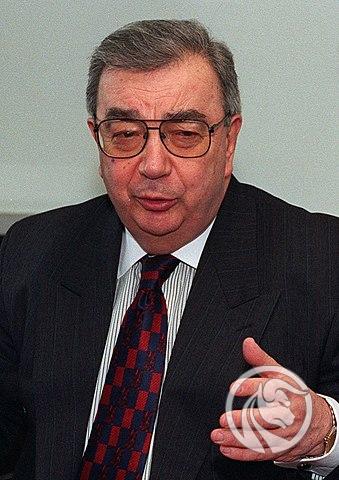
J. Primakow 1997. Source: wikipedia.org
The public and the opposition jumped at the throat of the government that had been put together a few months earlier. Yeltsin was forced to apologize to the previously released Chernomyrdin. However, it was not accepted in the Duma. A compromise solution was chosen. He took power Evgenia Primakov. Both communists and oligarchs were pleased. Both groups did not want to continue neoliberal reforms. Primakov focused on extinguishing fires and calming public sentiment. However, promises regarding salary increases and payment of arrears were not implemented. As a result, on October 7, 1998, some trade unions in Russia announced a nationwide strike. The country was partially paralyzed, which also did not make it easier for the government to act. The crowds demanded the resignation of President Yeltsin, who less than a decade earlier was treated as the savior of Russia.
Primakov's cabinet operated for a surprisingly long time, until May 1999. However, Yeltsin liked to frequently mention "political bumpers" back then. Finally, Vladimir Putin was appointed to this honorable position. He was not a very popular politician. Many commentators thought it wouldn't last a few months. This was the fifth prime minister in 18 months. Surprisingly, however, Putin handled the crisis. He presented himself to the public as a strong statesman who values law and order. After years “yelcining” in Russian politics, society felt hope that a strong politician had appeared who would restore Russia to its rightful place.
Video: Examples “yelcining”
Unexpectedly, Yeltsin resigned as president of Russia on December 31, 1999. Vladimir Putin, who was then prime minister, became interim president. In March 2000, Putin won the presidential elections in the first round, where he won 53% of the votes.
Economic reconstruction and the Putin era
The pre-infarction state of the Russian capital market caused the economy to suffer a hard landing. However, economic reconstruction was relatively quick. The commodity boom that lasted until 2007 helped. High prices of crude oil and other raw materials resulted in an inflow of capital into the country. This allowed us to increase social spending and sort out the financial situation. Huge currency reserves were built to cushion external and internal shocks. Government debt also virtually disappeared, and the country's economic development took place in three directions. Moscow and its surrounding areas developed the fastest. Saint Petersburg and other key cities and regions of the country (including those related to oil extraction) are slightly slower. However, the Russian province was basically left out of the economic transformation. This resulted in the migration of people from rural areas to cities, which further increased the disparities between regions. The growth machine stopped sometime around 2013. The country stopped developing dynamically because the authorities focused more on geopolitical and military issues rather than internal ones.
Russian Crisis – Summary
The Russian crisis broke out in 1998 due to the country's failure to repay part of its foreign debt. This took place in the summer of 1998. The crisis caused large losses for American investment banks that eagerly lent money to Russia. This, in turn, led to the flight of capital from the region and greatly deepened the problem.
The Russian crisis is considered by some to be an echo of the Asian crisis that occurred slightly earlier. Indeed, some elements converge. The financial sector of Russia and the Asian Tigers was very weak. This meant it was vulnerable to external shocks. The reason for the fragility of the financial systems in Asia and Russia was too high exchange rates and financing the capital needs of banks on foreign markets. The loans were taken in foreign currencies and placed on the domestic market. This resulted in a currency mismatch. The risk was protected by fixed or semi-liquid exchange rates, which in theory eliminated the risk.
Due to domestic and external factors, it was necessary to devalue the ruble. Capital outflow has led to liquidity drying up. As a result, the initial shortness of breath turned into a deep crisis, which ended with high unemployment and the return of inflation. The Russian banking sector has been licking its wounds for over two years. Russia's problems spilled over into some countries in the region. Both Ukraine and Moldova had problems with debt servicing. The crisis in Ukraine was particularly painful and lasted until 2000.
The Russian crisis is a perfect example that irresponsible fiscal, economic and monetary policies can cause serious problems, even in a nuclear power. The above-mentioned crisis was a kind of catharsis that reduced the influence of oligarchs in the economy. The cost was the slow erosion of democracy, which is now more of a façade. Western-style liberalism was buried for several decades.






















![Forex Club – Tax 9 – Settle tax on a foreign broker [Download the Application] Forex Club - Tax 9](https://forexclub.pl/wp-content/uploads/2024/02/Forex-Club-Podatek-9-184x120.jpg?v=1709046278)
![Trading View platform – solutions tailored to the needs of traders [Review] trading view review](https://forexclub.pl/wp-content/uploads/2024/03/trading-view-recenzja-184x120.jpg?v=1709558918)
![How to connect your FP Markets account to the Trading View platform [Guide] fp markets trading view](https://forexclub.pl/wp-content/uploads/2024/02/fp-markets-trading-view-184x120.jpg?v=1708677291)
![CRB index – one of the popular commodity market benchmarks [Guide] crb index](https://forexclub.pl/wp-content/uploads/2024/05/indeks-crb-184x120.jpg?v=1715055656)
![How to invest in ChatGPT and AI? Stocks and ETFs [Guide] how to invest in chatgpt and artificial intelligence](https://forexclub.pl/wp-content/uploads/2023/02/jak-inwestowac-w-chatgpt-i-sztuczna-inteligencje-184x120.jpg?v=1676364263)





![Izabela Górecka – “Success on the market depends not only on knowledge, but also on emotional stability” [Interview] Izabela Górecka - interview](https://forexclub.pl/wp-content/uploads/2024/04/Izabela-Gorecka-wywiad-184x120.jpg?v=1713870578)
![WeWork – the anatomy of the collapse of a company valued at $47 billion [WeWork, part II] wework bankruptcy story](https://forexclub.pl/wp-content/uploads/2024/04/wework-bankructwo-historia-184x120.jpg?v=1711729561)
![Adam Neumann – the man who screwed up Softbank [WeWork, part AND] adam neumann wework](https://forexclub.pl/wp-content/uploads/2024/04/adam-neumann-wework-184x120.jpg?v=1711728724)


![The most common mistakes of a beginner trader - Mr Yogi [VIDEO] Scalping - The most common mistakes of a beginner trader - VIDEO](https://forexclub.pl/wp-content/uploads/2024/03/Scalping-Najczestsze-bledy-poczatkujacego-tradera-VIDEO-184x120.jpg?v=1711601376)
![Learning patience: No position is also a position - Mr Yogi [VIDEO] Scalping - Learning patience - No position is also a position - VIDEO](https://forexclub.pl/wp-content/uploads/2024/03/Scalping-Nauka-cierpliwosci-Brak-pozycji-to-tez-pozycja-VIDEO-184x120.jpg?v=1710999249)
![When to exit a position and how to minimize losses - Mr Yogi [VIDEO] Scalping - When to exit a position and how to minimize losses - VIDEO](https://forexclub.pl/wp-content/uploads/2024/03/Scalping-Kiedy-wyjsc-z-pozycji-i-jak-minimalizowac-straty-VIDEO-184x120.jpg?v=1710336731)




